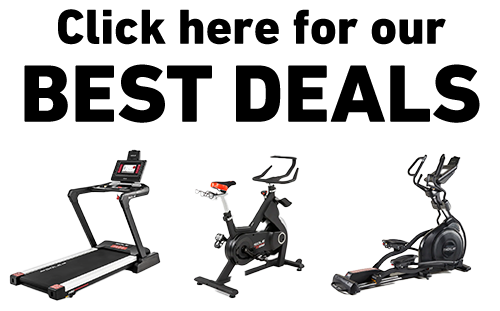Key Takeaways
- Walking 20,000 steps equals 8–10 miles for most adults, though this varies based on height, stride length, and walking pace.
- Men generally cover more distance in 20,000 steps than women due to longer average stride lengths (2.5 feet vs 2.2 feet).
- Your walking speed affects your miles-to-steps ratio; walking at 2 mph requires more steps per mile than walking at 4 mph.
- Breaking your 20,000 steps into multiple sessions throughout the day makes this ambitious goal more achievable and potentially more beneficial for overall health.
- SOLE treadmills provide precise distance tracking and joint-protective technology essential for safely maintaining the high-volume walking required to reach 20,000 daily steps.
What 20,000 Steps Really Means for Your Fitness Journey
While 10,000 steps has long been the gold standard for daily activity, many fitness enthusiasts are pushing boundaries by doubling that goal to 20,000 steps. But what does this ambitious target actually mean in terms of distance?
Converting steps to miles isn't as straightforward as you might think, and understanding this conversion is crucial for setting realistic expectations and avoiding injury.
For most people, 20,000 steps represents a significant commitment—approximately 8–10 miles of walking. That's equivalent to walking across Manhattan from top to bottom, with plenty of zigzagging through neighborhoods along the way. This distance requires 3–4 hours of dedicated walking time, making it essential to approach this goal thoughtfully.
Your height, gender, walking pace, and even terrain all influence how far you'll travel with each step you take.
|
Award-Winning Commercial-Grade Treadmills for Your Home
Why Choose SOLE: ✓ Commercial-grade steel frames with up to 4.0 HP motors 30-Day Money-Back Guarantee: Love it or return it, no questions asked. |
Your 20k Steps Calculator: Quick Reference Guide

Conversion estimates provide a starting point for understanding your distance, but individual stride length measurements will give you more accurate personal calculations.
For quick reference, most people can use these general guidelines to estimate their distance at 20,000 steps:
|
Height Range |
Average Stride Length |
Approximate Miles in 20,000 Steps |
|
Under 5'3" |
2.0 feet |
7.6 miles |
|
5'3" to 5'7" |
2.2 feet |
8.3 miles |
|
5'8" to 6'0" |
2.5 feet |
9.5 miles |
|
Over 6'0" |
2.7 feet |
10.2 miles |
To calculate the approximate miles, simply multiply your average stride length by 20,000, and divide that answer 5,280. These figures are approximations based on walking at an average pace (about 3 mph).
Your actual distance may vary depending on if you're walking slowly through a crowded shopping mall or briskly around a track.
Most fitness trackers will adjust their calculations based on your walking speed, giving you a more accurate reading of distance covered.
For Men: How Far is 20,000 Steps?
Men have longer stride lengths than women of the same height, which means they generally cover more distance in the same number of steps.
The average adult male has a stride length of approximately 2.5 feet when walking at a normal pace. Using this average, 20,000 steps would translate to about 9.5 miles.
Height plays a significant role in determining stride length for men. A man who stands 5'6" might have a stride length closer to 2.2 feet, resulting in 20,000 steps equaling about 8.3 miles.
Meanwhile, a man who is 6'2" might have a stride length of 2.8 feet or more, meaning his 20,000 steps could cover nearly 10.6 miles.
Walking speed also affects stride length. When walking briskly (about 4 mph), stride length naturally increases by about 10–15%. This means a man who normally covers 9.5 miles in 20,000 steps at an average pace might cover 10.5–11 miles in 20,000 steps when walking briskly.
For Women: How Far is 20,000 Steps?
Women generally have shorter stride lengths compared to men of similar height, averaging around 2.2 feet per step at a normal walking pace.
Using this average, 20,000 steps would translate to approximately 8.3 miles for the typical adult woman. This difference is important to recognize when setting goals or comparing progress with walking partners of different genders.
Walking Pace: How Long Will 20k Steps Take?
Slow Walking (2 mph): Time to Complete 20k Steps
At a leisurely pace of 2 mph, you'll take more steps to cover each mile because your stride length is shorter. For someone of average height, this means about 2,400 steps per mile.
At this pace, 20,000 steps would equal approximately 8.3 miles and would take you about 4 hours and 10 minutes of continuous walking to complete.
This slower pace is common when you're shopping in a store, walking with young children or elderly companions, navigating crowded spaces, or recovering from an injury.
While slow walking takes longer to accumulate steps, it still provides significant health benefits, especially for those who are less mobile or just beginning their fitness journey.
Average Walking (3 mph): Your Time Investment
At a moderate pace of 3 mph, that is, the speed most adults naturally walk when moving purposefully, you'll take about 2,000–2,200 steps per mile. At this pace, 20,000 steps would equal approximately 9–10 miles and would take roughly 3 hours to complete.
This represents a significant time commitment but is entirely achievable when incorporated thoughtfully into your daily routine. Many step enthusiasts find success by combining dedicated walking sessions with intentionally active choices throughout the day.
Brisk Walking (4 mph): Completing 20k Steps Faster
When you pick up the pace to 4 mph, you're engaging in what fitness experts consider "brisk walking" or power walking.
At this speed, your stride naturally lengthens, meaning you'll take fewer steps per mile—around 1,800–1,900. For 20,000 steps at this pace, you'd cover approximately 10.5–11 miles in about 2 hours and 40 minutes.
Brisk walking significantly increases your calorie burn, cardiovascular benefits, and muscle engagement while reducing the time commitment needed to reach your step goal.
Jogging vs. Walking: Impact on Your 20k Journey
Introducing jogging intervals into your walking routine dramatically changes your steps-to-miles ratio.
When jogging at approximately 5–6 mph, your stride length increases significantly, typically resulting in about 1,400–1,500 steps per mile. This means 20,000 steps while jogging could translate to nearly 14 miles!
However, the trade-off is worth considering—while you'll cover more distance in fewer steps, jogging increases impact on joints and requires more recovery time. Many fitness experts recommend a mixed approach for sustainable high-volume training.
Achieve 20,000 Daily Steps Safely with SOLE's Joint-Protective Technology

SOLE treadmills provide the joint protection and precision tracking essential for safely achieving ambitious daily step goals without risking overuse injuries from high-impact surfaces.
Walking 20,000 steps daily is an ambitious goal that requires proper equipment to avoid overuse injuries.
SOLE treadmills provide the essential joint protection needed for high-volume walking through our Cushion Flex Whisper Deck technology, which reduces impact by 40% compared to outdoor concrete or asphalt surfaces.
The F80 Treadmill is perfect for building up to 20,000-step goals with precise speed control from 0.5–12 mph and accurate distance tracking that eliminates guesswork.
The powerful 3.25 HP motor maintains consistent performance during extended walking sessions, while the 10.1" touchscreen keeps you motivated with entertainment and progress tracking.
For serious high-volume walkers, the F85 and F89 models offer enhanced cushioning systems and larger 20" x 60" walking surfaces that accommodate natural stride variations during long sessions.
The whisper-quiet operation allows for early morning or late evening walks without disturbing others, which is essential when dedicating 3–4 hours daily to reach your step goals.
The commercial-grade construction with lifetime warranties on frame and motor shows SOLE's confidence in handling daily high-volume use.
The free SOLE+ App includes progressive walking programs that help you build up to 20,000 steps safely, preventing the overuse injuries common when increasing volume too quickly.
No matter if you're splitting your steps throughout the day or completing longer dedicated sessions, SOLE's precision tracking and joint protection make ambitious step goals achievable and sustainable.
Frequently Asked Questions (FAQs)
Is walking 20,000 steps the same as running 10 miles?
Walking 20,000 steps is not equivalent to running 10 miles in terms of calorie burn or cardiovascular impact, though the distance covered may be similar. When running, you typically cover more ground with fewer steps due to increased stride length. While walking 20,000 steps typically equals 8–10 miles for most people, running 10 miles would usually require 12,000–15,000 steps.
How many calories do I burn walking 20,000 steps?
Calorie burn from walking 20,000 steps varies significantly based on your weight, walking speed, and terrain. For a 160-pound person walking at a moderate pace on flat ground, 20,000 steps (approximately 10 miles) would burn roughly 800-1,000 calories. This increases to 1,200–1,400 calories for someone weighing 200 pounds. Walking uphill or at a brisk pace can increase calorie burn by 20–40%.
Can I split my 20,000 steps throughout the day?
Absolutely! Splitting your 20,000 steps into multiple sessions throughout the day is both practical and can be more beneficial for your overall health. Try dividing your step goal into manageable chunks throughout your day—perhaps 5,000 steps in the morning, 5,000 during lunch, 5,000 after dinner, and the remaining 5,000 through intentional movement.
What happens if I walk 20,000 steps every day for a month?
Consistently walking 20,000 steps daily for a month produces remarkable physical and mental transformations. Physically, most people experience weight loss of 4–8 pounds (depending on diet), improved cardiovascular fitness, increased leg muscle definition, and enhanced endurance. Mental benefits often include better sleep quality, reduced stress levels, improved mood, and increased energy.
How do SOLE treadmills support safe 20,000-step training?
SOLE treadmills are essential for safely achieving 20,000 daily steps due to their superior joint protection and precision tracking. The Cushion Flex Whisper Deck technology reduces impact by 40%, crucial when walking 8–10 miles daily to prevent overuse injuries.
The F80 and F85 models provide precise distance tracking and consistent speeds that help you pace your high-volume training appropriately. Commercial-grade motors (up to 4.0 HP) maintain steady performance during extended sessions, while the lifetime warranty ensures your equipment can handle daily high-volume use.







Leave a comment
This site is protected by hCaptcha and the hCaptcha Privacy Policy and Terms of Service apply.